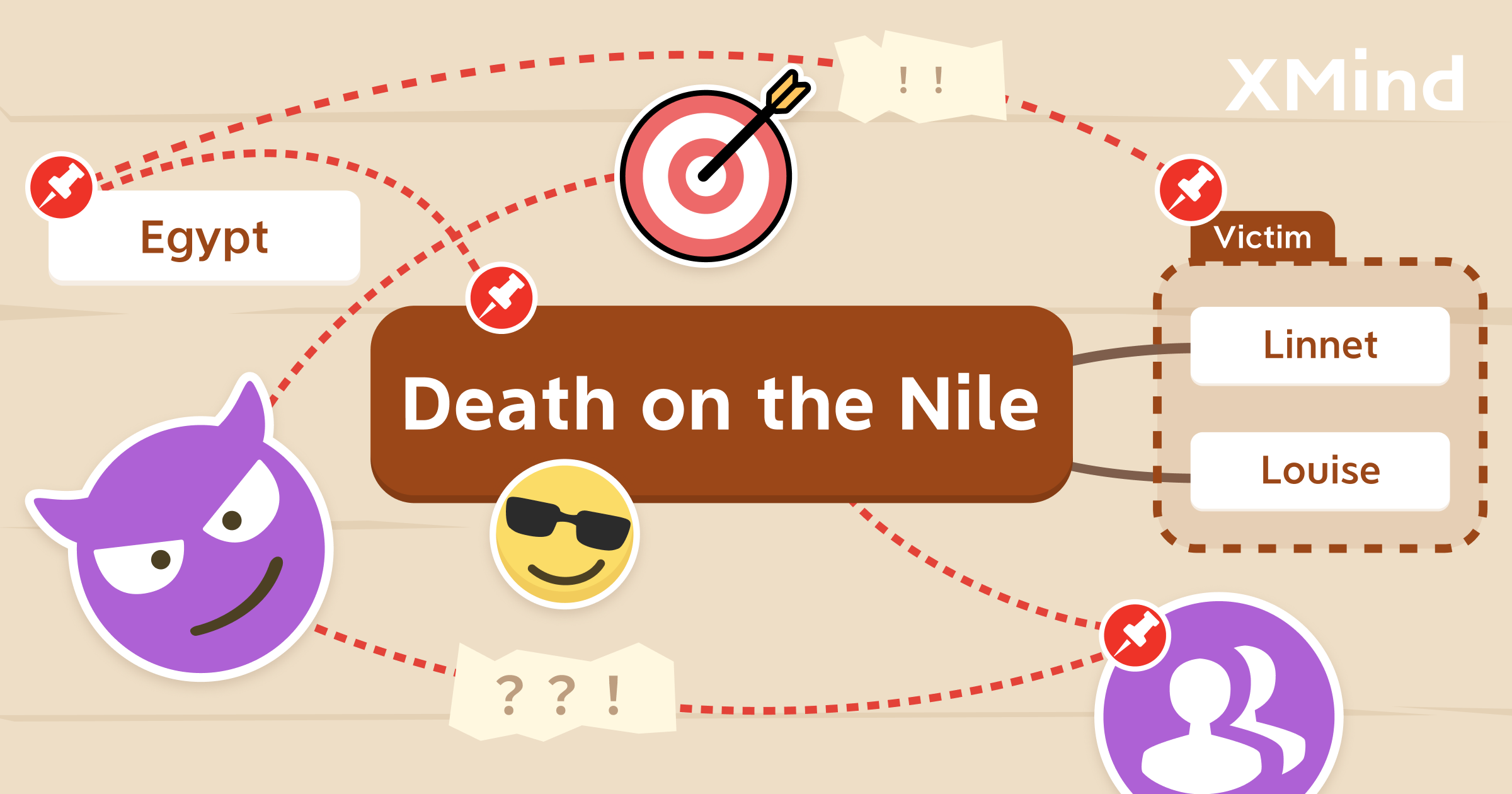Nov 12, 2021
How to Read a Detective Fiction: The Ultimate Guide with XMind

Nov 12, 2021
How to Read a Detective Fiction: The Ultimate Guide with XMind

Reading a detective fiction is like watching a play in theatre. You observe each character, read a dialogue that puts you on the edge of your seat, and embrace an ending that puts a lump in your throat.
As Gladys Mitchell said: “There are those among us who claim that the detective story is a form of escapist literature. Lovers of the genre will deny this, and they are right to do so, for the detective story addict is not content to sit back and enjoy what is called "a cosy read."
Find out how XMind can be Dr. Watson when you are reading a detective fiction.
To solve the puzzle, that is the crime in a detective fiction, we need to know what are related to the crime. In other words, what leads to a crime. These are some basic elements (5W1H) and by answering them, you have found out the murderer.
Who — Characters/Suspects/Murderer
Memorize the characters’ names and the relationship in the novel is a disaster for me. It slows me down, and I have to turn back to recall the person’s background again.
Use a Tree Table to jot down the characters following the chapters, and put down some notes about the character, such as gender, occupations, personality, etc. Tree Table can be used as a character reference sheet, divide the blocks in the first row as Name and Info, then you can fill the character list. Use shortcuts Tab to add a subtopic, and Return for a main topic.

If you are reading on an iPad, use Split View to read and build your character list side by side.

Gradually, you will get a full character list of the book, and you can check on it whenever you need it.

For iPad readers, Slide Over turns XMind a handy memo to check.
Once a crime happened, list the suspects, and record the alibi. Fill up the Matrix, or use drag-and-drop the characters for categorization or to dispel suspicion.

What — the Crime
Record the information about the crime from different characters following 5W1H rules.
You can record them in notes, or simply start in a new mind map by right-clicking the topic.

When — Timeline
Timeline visualizes the scene of other characters activities and location, while you can know better about the current situation, and. If there are more than 1 crime, Timeline also helps you to find similarities behind crimes, hence find out the murderer.
Timeline can also be used as a floor map. In Agatha Christie’s book “Murder on the Orient Express”,You can use the Timeline to build a floor map, and mark the path with relationship.

Why — Motivation
Based on the character list, you can also develop a character relationship mind map thanks to Floating Topics and Relationship.
Double-click the blank space of the mind map to add a floating topic, and then jot down the texts in it. Choose the topic and click Relationship, then choose the topic you want to connect with. Click the format panel and customize the relationship’s shape, line, style, etc. Double-click the relationship to add the texts.

Reading the notes on the relationship, you can have a general grasp of the conflicts between different characters. Keep reading, and you can dig out more secrets here. Use the relationship mind map we’ve just built, and note suspects with marker.

How — Methods
Collect clues and mark if it’s real or not in matrix helps you to solve this puzzle as well.

Let’s conclude today with Van Dine, the author of “Twenty Rules for Writing Detective Stories”: “The detective story is a kind of intellectual game. It is more — it is a sporting event. And for the writing of detective stories there are very definite laws — unwritten, perhaps, but nonetheless binding; and every respectable and self-respecting concocter of literary mysteries lives up to them. Herewith, then, is a sort of credo, based partly on the practice of all the great writers of detective stories, and partly on the promptings of the honest author’s inner conscience.”
Now, with the mind maps above, or, we should call it an investigation board now, you can assemble this jigsaw puzzle yourself, track the clues, and look for the murderer behind the curtain.
More Posts
Create and Organize Recipes With Mind Maps and Tree Table Templates
Using this free tree table template on the newest version of XMind you can create your own recipe, or document your favorite dishes for future tasty journeys in the kitchen!

How to Create the Perfect Lead Generation Pitch with XMind?

How to Integrate Ulysses with XMind for Better Writing
Capture your ideas with XMind, and record them in Ulysses - an ultimate writing app for everyone, running on Mac, iPad and iPhone.


One space for all your ideas
Organize thoughts, visualize structures, connect ideas, and unlock insights.
Get Started for Free


